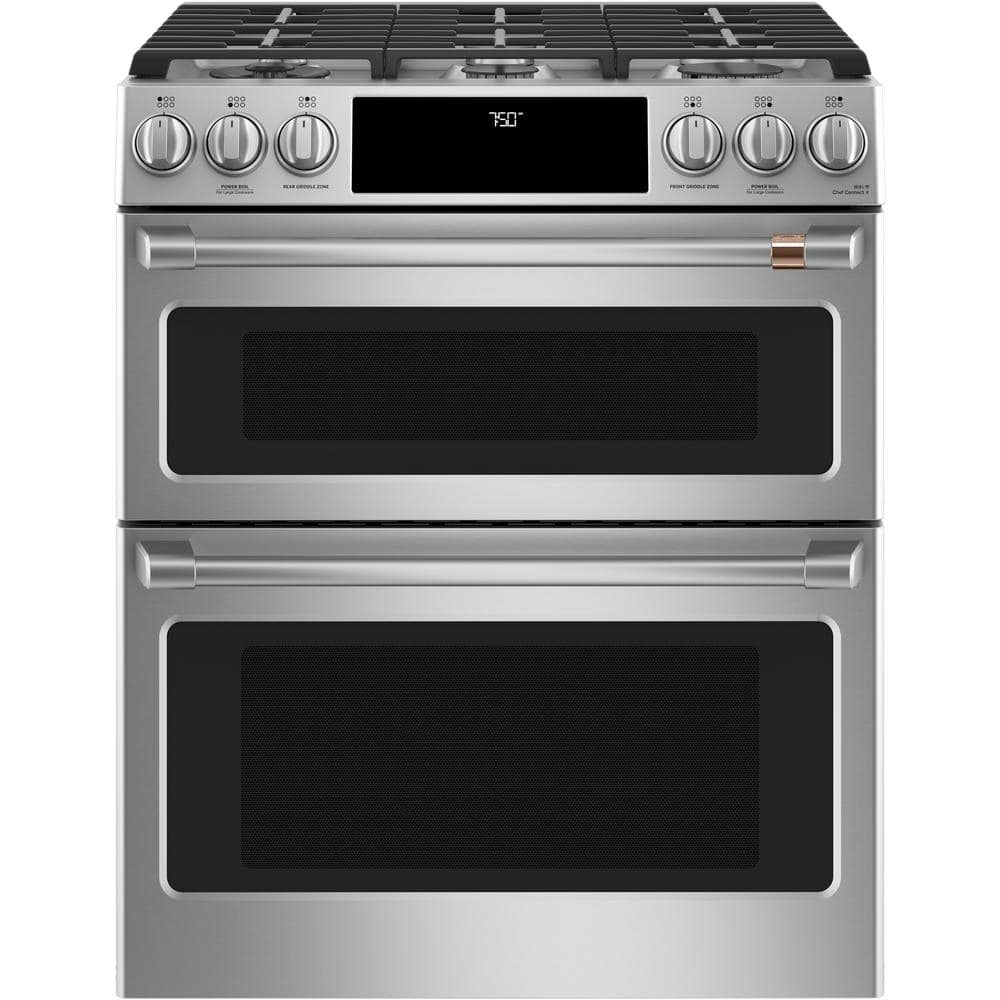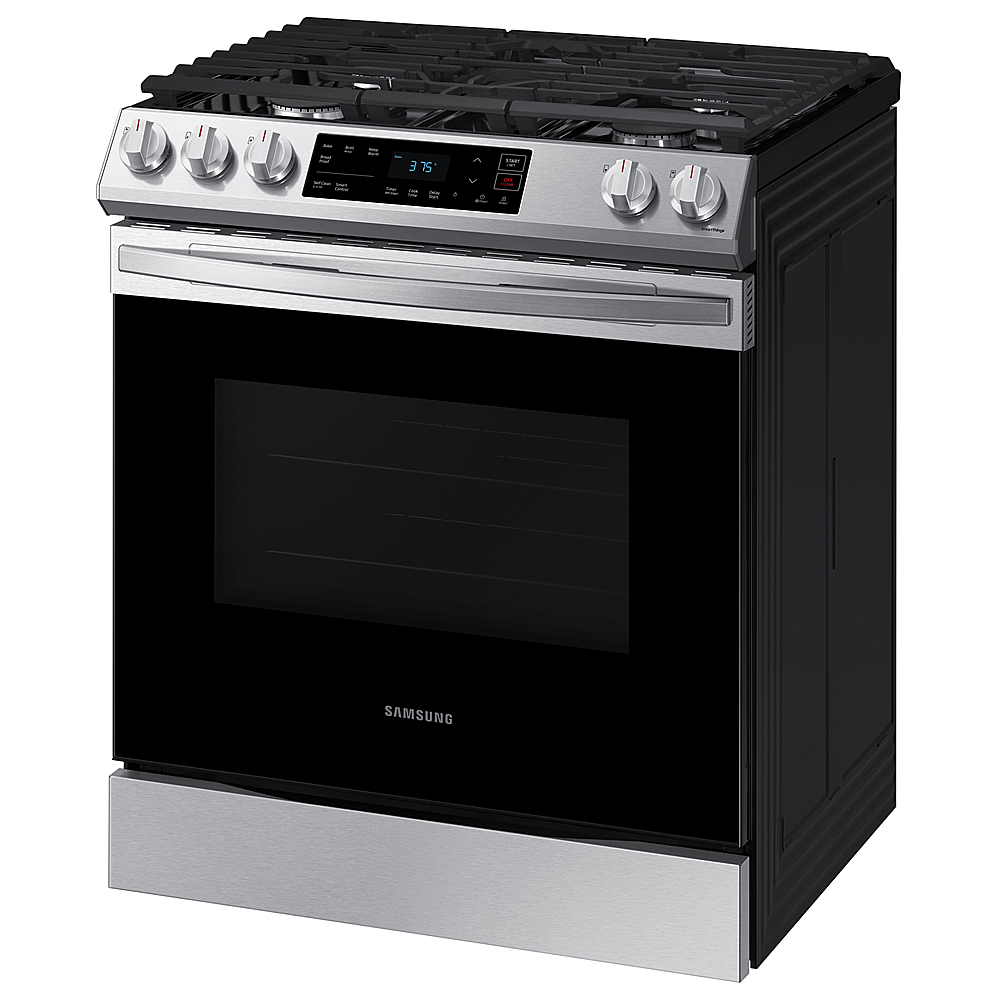Samsung 30 in. 6 cu. ft. Slide-In Gas Range with Smart Dial and Air Fry in Fingerprint Resistant Stainless Steel
-
( 7 Reviews )Rated 4.86 out of 5 based on 7 customer ratings07
Smart Dial learns how you like to cook. Air Fry mode provides healthier cooking with a crunch. Powerful convection saves time cooking food fast and more evenly.
-
Belling SANDRINGHAM90DFT 90cm Dual Fuel Range Cooker – Black – A/A Rated
Rated 4.83 out of 506Belling SANDRINGHAM90DFT 90cm Dual Fuel Range Cooker – Black – A/A Rated
Rated 4.83 out of 506
Upgrade any kitchen with this sleek Samsung slide-in gas range. It blends seamlessly with your cabinetry to give your kitchen a high-end look and offers flexibility for big cooking jobs, from its five-burner cooktop to its large-capacity 6 cu. ft. oven. The new Smart Dial simplifies oven settings in a single dial and intuitively learns based on your cooking preferences. Cooking just got healthier with new Air Fry mode. Using little to no oil, you can quickly prepare your favorite fried foods right in your oven. Air Fry tray included. It also features Convection, for beautifully even cooking that takes less time and uses less energy. And with a reversible cast iron griddle and custom wok grate, this slide-in gas range is the perfect range for anyone who loves to cook and entertain.
- Smart Dial simplifies oven settings in a single dial and intuitively learns based on your cooking preferences
- Air Fry uses little to no oil to quickly prepare your favorite fried foods right in your oven
- Air Fry tray included
- Powerful Convection saves you time by cooking food fast and more evenly. Perfect for baking and roasting
- Large 6 cu. ft. Oven Capacity
- Illuminated Knobs
- Fingerprint Resistant Finish
- Reversible Cast-Iron Griddle
- Ready2Fit Guarantee
- Temperature Probe
- Wok Ring
- Wi-Fi Connectivity
- Voice-Enabled
- Convection Auto Conversion
- Self Clean
- Child Safety Lock
- Sabbath Mode
- Also available in Fingerprint Resistant Black Stainless and Tuscan Stainless
Additional information
| Depth With Door(s) Open 90 Degrees (In.) | 25 |
|---|---|
| Oven Interior Depth x Height x Width (in) | 19.6 x 21.6 x 24.8 |
| Product Depth x Height x Width (in) | 28.68 x 37 x 29.9 |
| Range Size | No Certifications or Listings |
| Certifications and Listings | No |
| Manufacturer Warranty | One (1) Year Parts and Labor |






by Arthur
Fit perfectly and looks good. We had to do some extra work due to an issue with building code, but the installers were able to fix it within 24 hours of delivery.
by Tim
I Love this range!
by Rachel
Fair price and a great range overall.
by Antonio
I absolutely love this range!! And I cook ALOT. As always- HD did a great job delivering.
by Kurama
so happy that i have decided to purchase this stove. best stove ever!!
by Breeze
We have only had it about a month and have not yet taken advantage of all of the features, but we love our new Samsung gas range and look forward to many years of use. And it looks impressive as several people have commented when they’ve visited our kitchen. Also, the fingerprint resistant Tuscan stainless steel is a big plus as normal stainless has been a challenge to keep clean.
by Peace
[This review was collected as part of a promotion.] Love this range. The 22,000 btu power burner is a complete game changer, not only for searing and using a wok, but the added power and heat distribution presented with the double burner allows you a lot more control over the pan as well. My only gripe is that the thermometer probe requires you set a temp when the stove will turn off, which means the stove automatically turns off if you remove the probe to place it in another part of the meat, and it meets the heat of the oven.